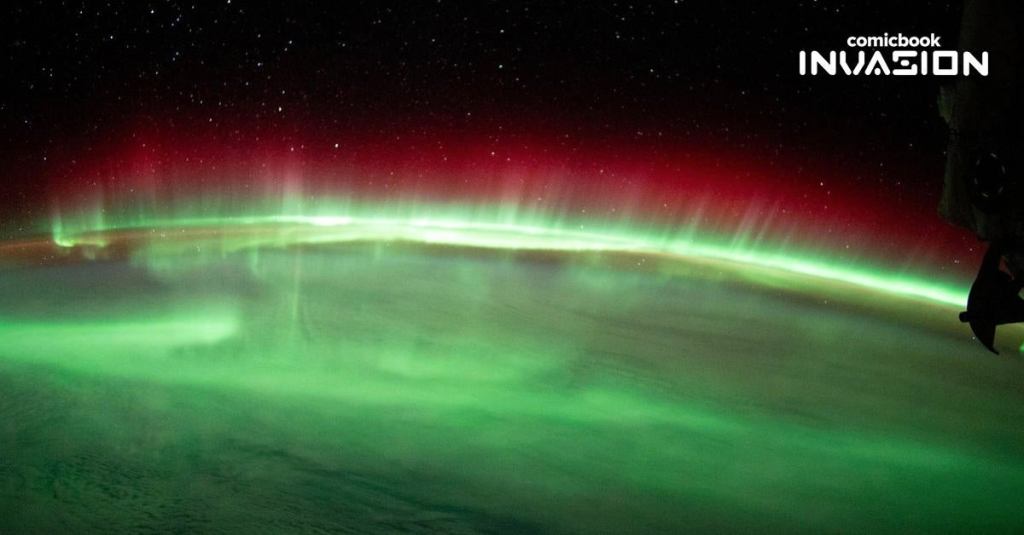Sometimes the most beautiful space pictures come from the closest sections of the cosmos. Tuesday, NASA shared one such snapshot captured by astronaut Bob Hines. Shared to the agency’s social media platforms, the picture shows the green and red hues of the “southern lights” above the Indian Ocean near Antarctica.
Videos by ComicBook.com
Aurora australis, as researchers officially call the phenomenon, hover over the planet’s horizon casting a shockingly gorgeous green over a significant part of the planet.
“The vibrant displays of light around Earth’s North and South Poles are caused by the interaction of solar particles, ejected by the Sun, and our planet’s protective magnetic field,” NASA writes alongside the picture. “Most of the time these interactions are relatively limited and go unnoticed by us on Earth. However, during large solar storms, called coronal mass ejections, the Sun spews large bubbles of electrified gas which collide with our magnetic field at its North and South Poles and enter our atmosphere.”
The agency adds, “Once in the atmosphere, these energized solar particles collide with atmospheric gases resulting in beautiful displays of light. When solar particles collide with atmospheric oxygen they give off rich red and green hues as seen in this image. Conversely, if these same particles collide with nitrogen in our atmosphere they illuminate the sky in glows of blue and purple.”
As it turns out, Earth isn’t the only planet to have auroras. If a planet has an atmosphere and magnetic field, it like has auroras. Throughout all of time, some of the furthest planets in our solar system have exhibited aurora-making capabilities, including Saturn and Jupiter. In fact, Jupiter’s auroras were just seen in a new photo of the planet shared earlier in the week.
“The brightness here indicates high altitude – so the Great Red Spot has high-altitude hazes, as does the equatorial region,” said Heidi Hammel, Webb interdisciplinary scientist for solar system observations and vice president for science at AURA, said in a NASA blog post. “The numerous bright white ‘spots’ and ‘streaks’ are likely very high-altitude cloud tops of condensed convective storms.”









